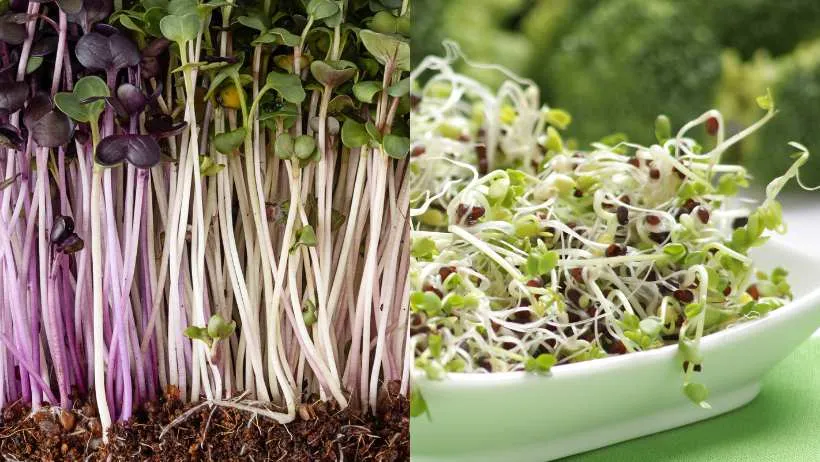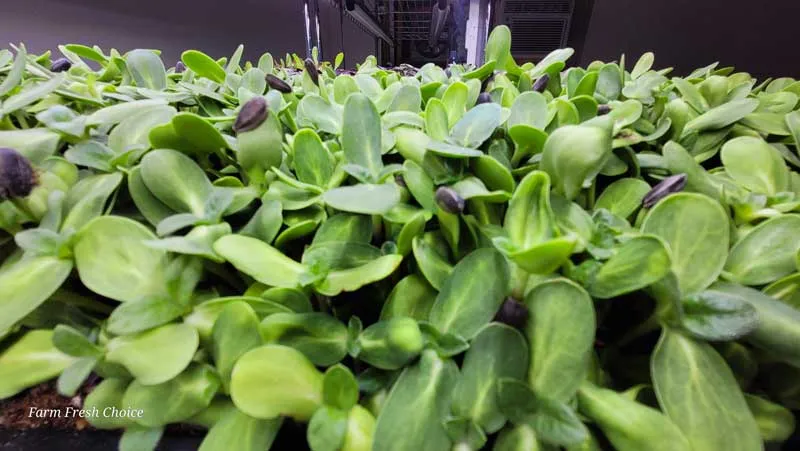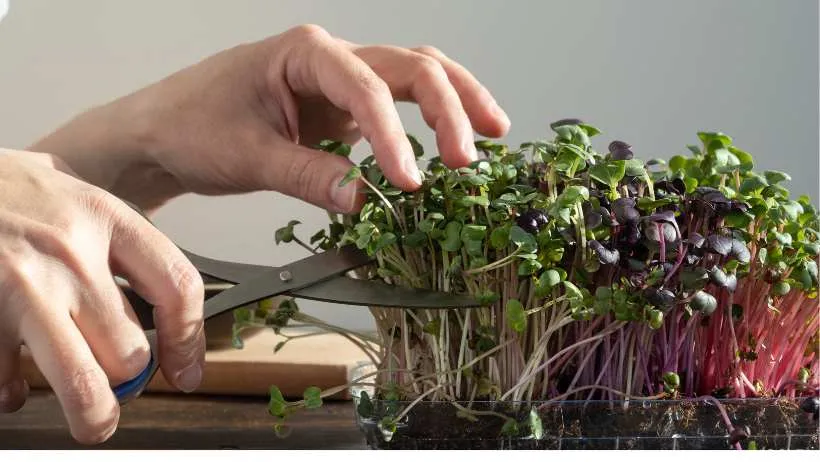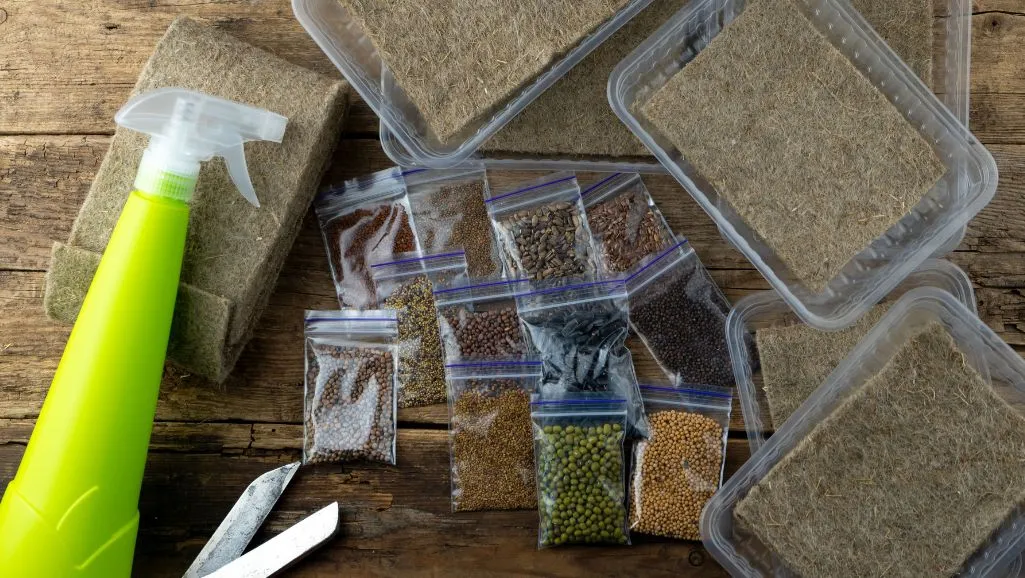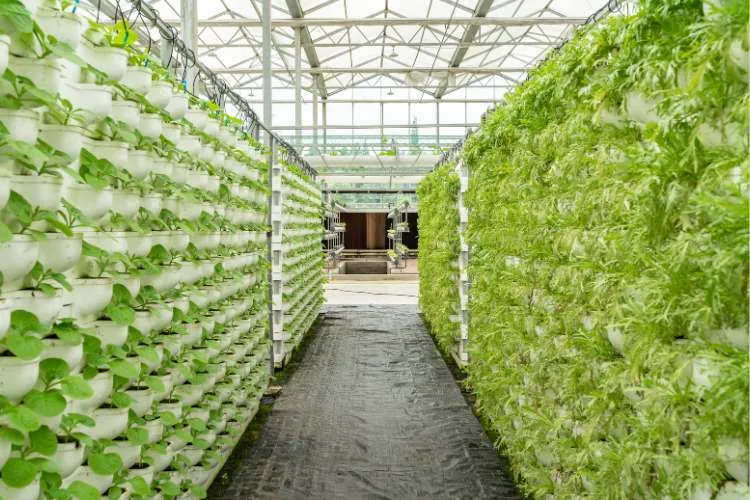Microgreens are young vegetable greens harvested just after the first true leaves have developed. These mini powerhouses pack a punch of flavor and a burst of color that can elevate any dish from ordinary to extraordinary.
Whether you’re a home cook looking to impress dinner guests or a professional chef aiming for that Instagram-worthy plate, microgreens are your secret weapon.
Using microgreens as a garnish is as simple as scattering a handful over your dish. They are nature’s confetti, adding visual appeal and a fresh, vibrant taste. You can sprinkle them over soups, salads, main courses, and desserts.
The key is to add them just before serving as a finishing touch to maintain their crispness and delicate flavors.
Best Microgreens for Garnish
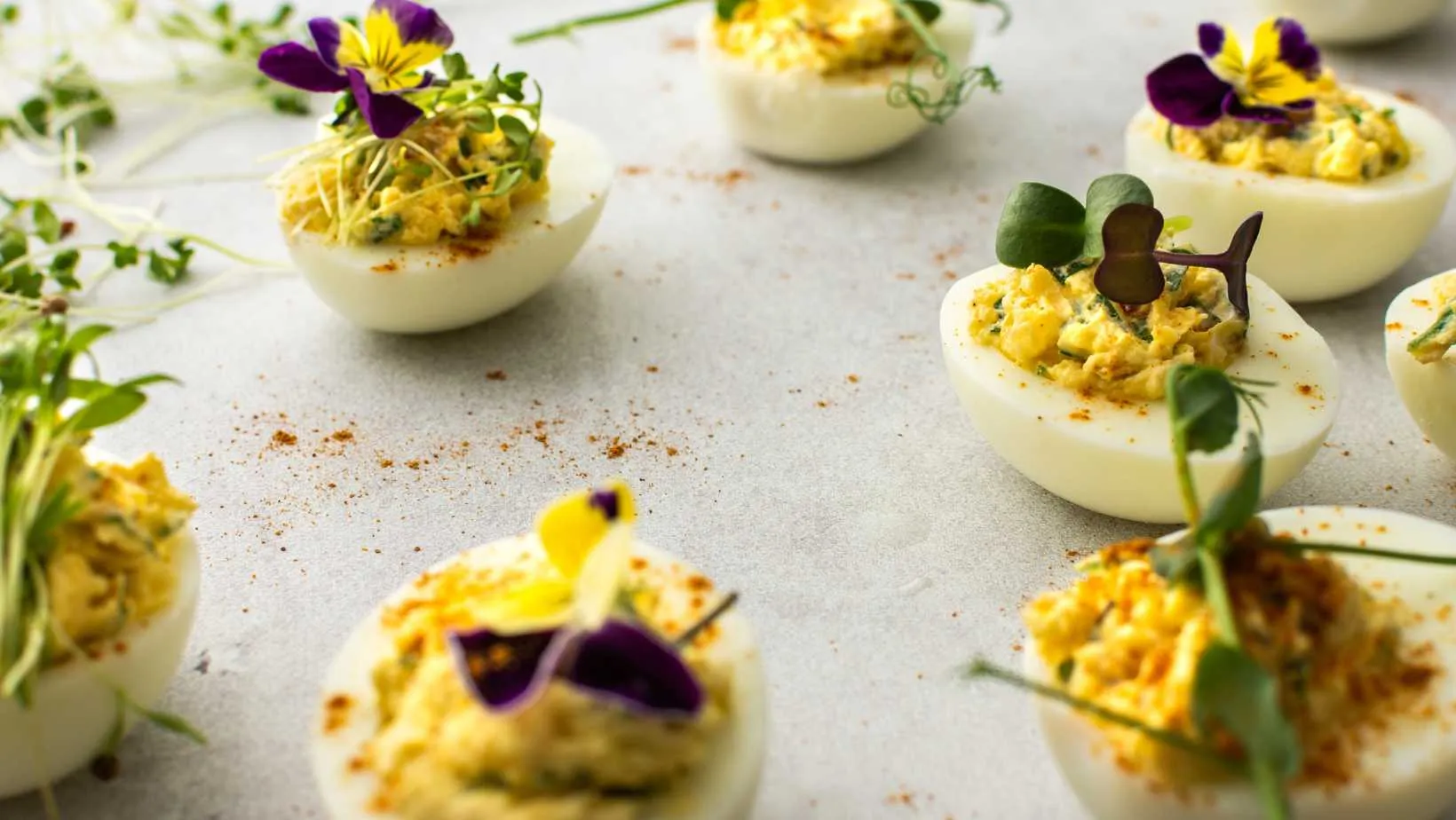
Not all microgreens are equal; each type offers a unique flavor and flair. Let’s examine some of the best microgreens for garnish.
Red Radish
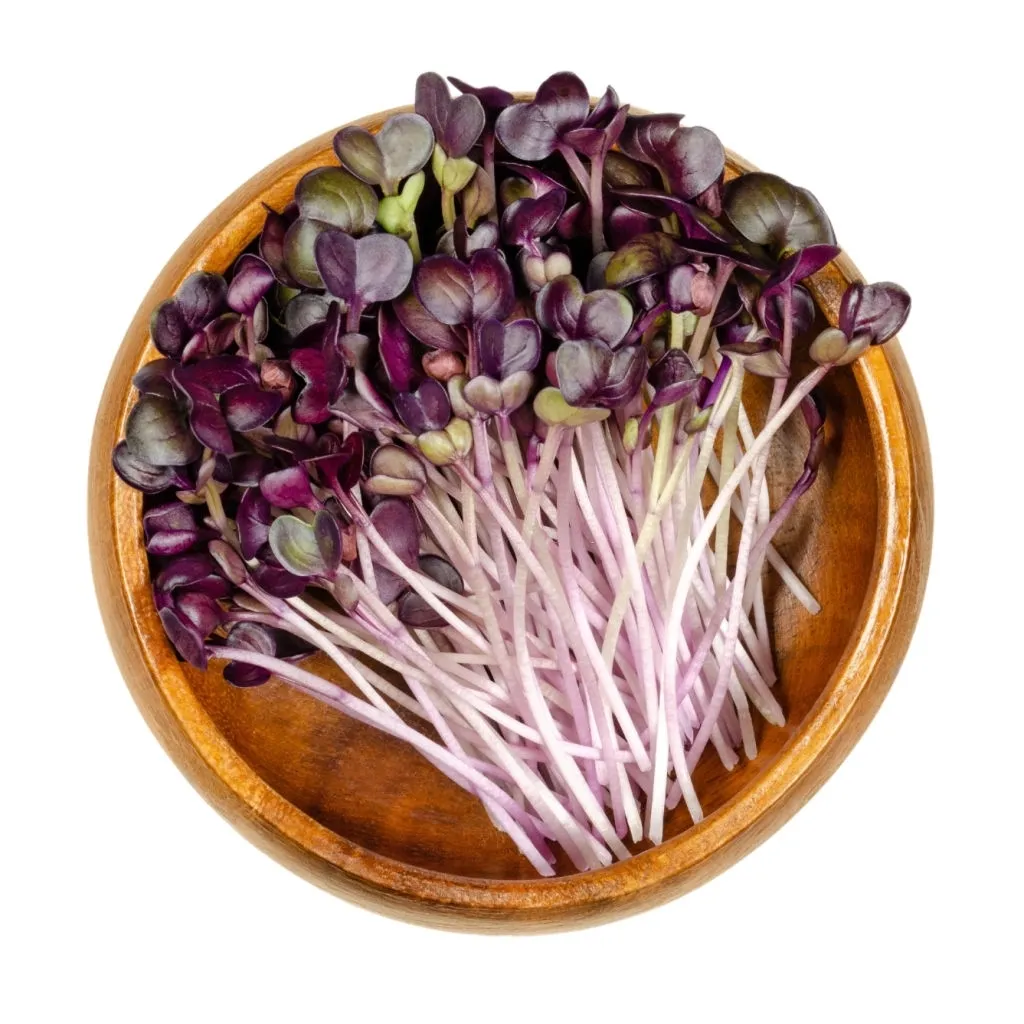
Red radish microgreens are like the little firecrackers of the garnish world. Their peppery bite can wake up any dish, and their vibrant red stems add a striking contrast against more muted colors. Try them on top of avocado toast or mixed into a fresh garden salad for a zesty kick.
Red Amaranth
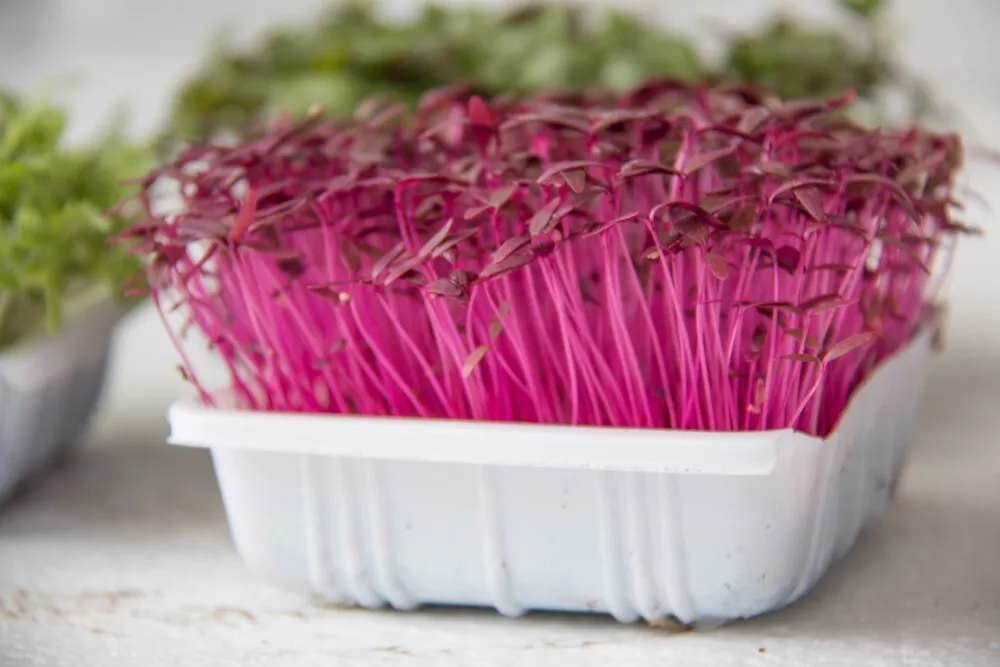
Red amaranth microgreens are your go-to if you want to add a touch of elegance and sophistication to your dishes. Their deep red hue is stunning, and their mild, earthy flavor pairs beautifully with various dishes.
Imagine a white porcelain plate with a delicate scattering of red amaranth on a creamy risotto – pure perfection!
Pea Tendrils

With their curly and bright green color, Pea tendrils bring a sweet, fresh taste reminiscent of early spring. They’re perfect for adding a bit of whimsy to your plate. Toss them on a stir-fry or use them to garnish a creamy potato soup for an unexpected twist.
Sunflowers
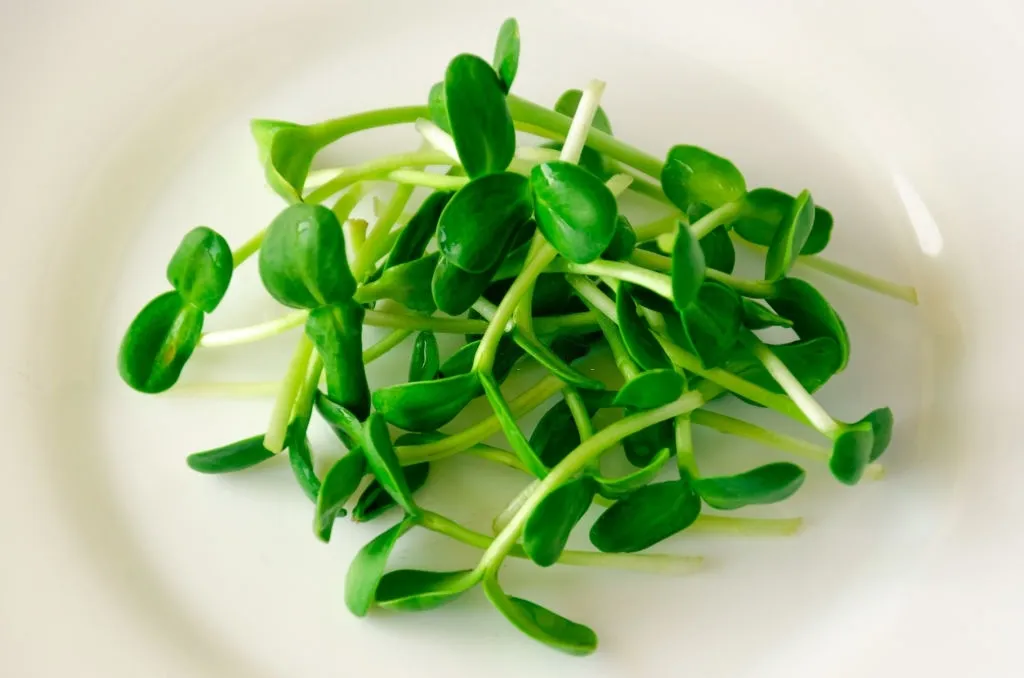
Sunflower microgreens are the sunshine on your plate. Their nutty flavor and crunchy texture complement both savory and sweet dishes. Top a rich chocolate cake with them or sprinkle it over grilled chicken breast for a delightful crunch.
Cilantro
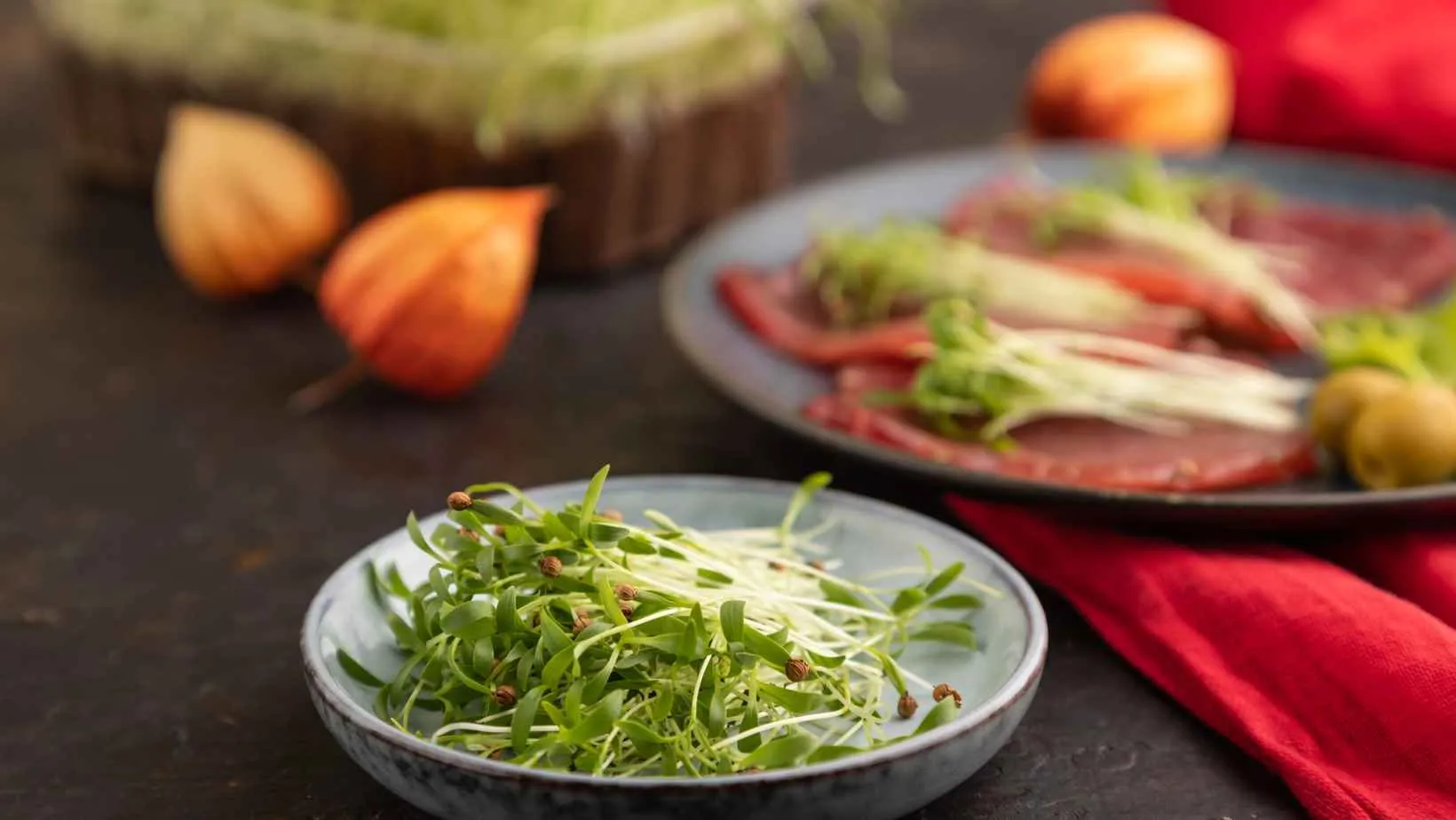
Cilantro microgreens are milder versions of their full-grown counterparts but still pack that signature citrusy punch. They’re fantastic in Mexican dishes, adding a fresh finish to tacos, enchiladas, or a bowl of spicy chili.
Mustard
Mustard microgreens add a spicy, tangy flavor that can deepen any dish. Their bright green leaves are perfect for garnishing hearty meats or adding a kick to a sandwich. Imagine a perfectly grilled sausage with a sprinkle of mustard microgreens—like a gourmet picnic on a plate!
Arugula

Arugula microgreens have a slightly milder peppery taste than the mature leaves. They’re fantastic for adding a bit of heat to dishes without overpowering them. For a peppery pop, use them to top a pizza, mix into a salad, or garnish a plate of roasted vegetables.
Microgreens Garnish Makes Meats Look Garden-Fresh
A perfectly cooked steak or succulent roast chicken is already a sight. But add a sprinkle of microgreens, and your plate will look like it was plucked straight from a gourmet garden.
Microgreens add visual appeal and a layer of freshness that can balance the richness of meats.
Think about a juicy lamb chop garnished with a handful of pea tendrils or a seared duck breast topped with red amaranth. The microgreens add a pop of color and bring a fresh, vibrant taste that cuts through the meat’s richness.
It’s like adding fresh air to your dish, making it visually stunning and incredibly flavorful.
Microgreens Garnish Pairs Well with Other Garden Greens and Veggies
Microgreens are the ultimate team players in the world of garnishing. They pair beautifully with other garden greens and vegetables, adding layers of flavor and texture to your dishes. Microgreens can take your creation to the next level, creating a vibrant salad, a colorful veggie platter, or a hearty grain bowl.
Imagine a fresh summer salad with lettuce, cherry tomatoes, cucumbers, and a generous sprinkle of sunflower microgreens. The sunflower microgreens’ nuttiness complements the tomatoes’ sweetness and the cucumbers’ crunch, creating a harmonious blend of flavors and textures.
Or imagine a roasted vegetable platter with cilantro microgreens scattered on top. The bright green leaves add a fresh, citrusy note that enhances the earthy flavors of the roasted veggies.
Garnishing with Microgreens Adds Color to Any Plate
We eat with our eyes first, and nothing is more enticing than a plate bursting with color. Microgreens are like an artist’s palette, offering a rainbow of hues that can transform any dish into a work of art.
From the deep reds of red amaranth to the bright greens of arugula, microgreens add a visual feast to your culinary creations.
Consider a creamy pumpkin soup garnished with mustard microgreens – the bright green leaves pop against the orange backdrop, creating a visually stunning contrast. Or a classic Caprese salad with a sprinkle of red radish microgreens – the peppery red stems add a touch of drama and excitement to the traditional red, white, and green color scheme.
How Chefs Use Microgreens
Chefs use microgreens in various creative and flavorful ways to enhance their dishes. These tiny greens are not just for show – they add depth, complexity, and freshness to culinary creations. Here’s how chefs incorporate microgreens into their dishes:
1. As a Garnish
Visual Appeal: Chefs often garnish their plates with microgreens to add a pop of color and a touch of elegance. A sprinkle of vibrant microgreens can make a dish look more appetizing and professional.
Flavor Enhancement: Different microgreens bring unique flavors – from the peppery punch of radish microgreens to the nutty undertones of sunflower shoots. Chefs select microgreens that complement and enhance the flavors of the main ingredients.
2. In Salads
Freshness and Crunch: Microgreens are frequently mixed into salads to add a layer of freshness and a delicate crunch. They can be used alone or combined with other greens to create a more complex and interesting salad.
Flavor Variety: Using a mix of different microgreens in a salad introduces a variety of flavors and textures, making each bite unique and exciting.
3. In Sandwiches and Wraps
Elevating the Ordinary: Adding microgreens to sandwiches and wraps is a simple way to elevate these everyday meals. Their fresh, crisp texture contrasts beautifully with the soft bread and other fillings.
Nutritional Boost: Microgreens are packed with nutrients, so adding them to sandwiches and wraps improves the taste and boosts the nutritional value.
4. In Soups
Finishing Touch: Chefs often use microgreens to add a finishing touch to soups. A handful before serving adds a fresh, bright element to hot soups and a lovely crunch to cold soups.
Flavor Balance: Microgreens can help balance the richness of creamy soups or enhance the freshness of vegetable-based soups.
5. In Main Courses
Flavor Accent: Microgreens add a burst of flavor to main courses. Whether it’s a seared steak, grilled fish, or roasted vegetables, a sprinkling of microgreens can complement and enhance the dish’s flavors.
Visual Contrast: The vibrant colors of microgreens add a visual contrast to main courses, making the dish more visually appealing and appetizing.
6. In Appetizers and Hors d’oeuvres
Bite-Sized Elegance: Microgreens are perfect for adding a touch of sophistication to appetizers and hors d’oeuvres. Microgreens add a delicate and refined touch, whether topping a canapé, bruschetta, or a small tart.
Flavor Depth: Microgreens’ concentrated flavors can greatly impact small bites, providing a taste that enhances the appetizer’s overall flavor profile.
7. In Drinks and Cocktails
Creative Mixology: Some innovative chefs and mixologists use microgreens in drinks and cocktails. A sprig of microgreens can add a fresh, herbal note to cocktails and serve as a stylish garnish.
Health Benefits: Microgreens can also be blended into smoothies and juices, providing a nutritional boost and a fresh, green flavor.
8. In Desserts
Unexpected Twists: Chefs are increasingly experimenting with microgreens in desserts. Certain microgreens’ peppery or citrusy flavors can provide an interesting contrast to sweet elements such as chocolate or fruit.
Artistic Presentation: Using microgreens in desserts adds an element of surprise and creativity, making the presentation more artistic and intriguing.
Tips for Using Microgreens
- Add Just Before Serving: Microgreens should be added just before serving to maintain their crispness and vibrant color.
- Pair Thoughtfully: Consider the microgreens’ flavor profile and how they complement the dish’s main ingredients.
- Use Sparingly: With microgreens, a little goes a long way. Use them sparingly to enhance the dish without overwhelming it.
- Store Properly: To ensure freshness and flavor, keep microgreens in the refrigerator and use them within a few days of purchase.
Final Thoughts
No matter your skill level in the kitchen, adding microgreens to your dishes is an easy way to bring vibrant color, texture, and fresh flavor to the table. Whether you’re garnishing a comforting bowl of soup or plating an elegant entrée, choosing the best microgreens for garnish ensures every meal looks as good as it tastes. Start experimenting with different varieties and let your creativity shine through every sprinkle and flourish!



